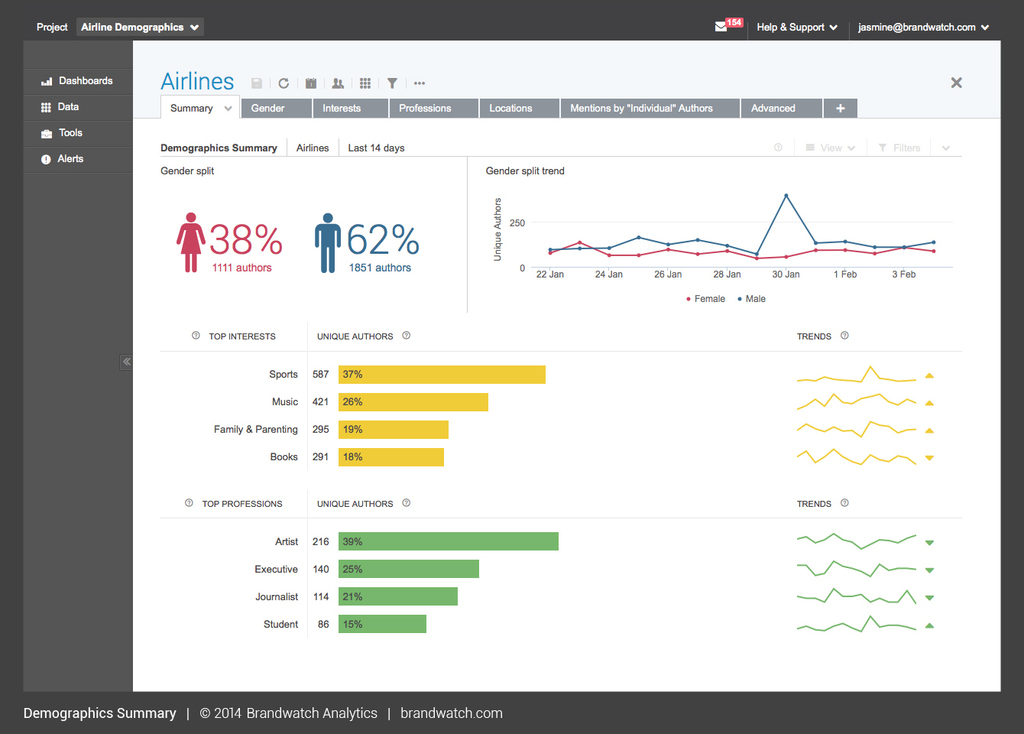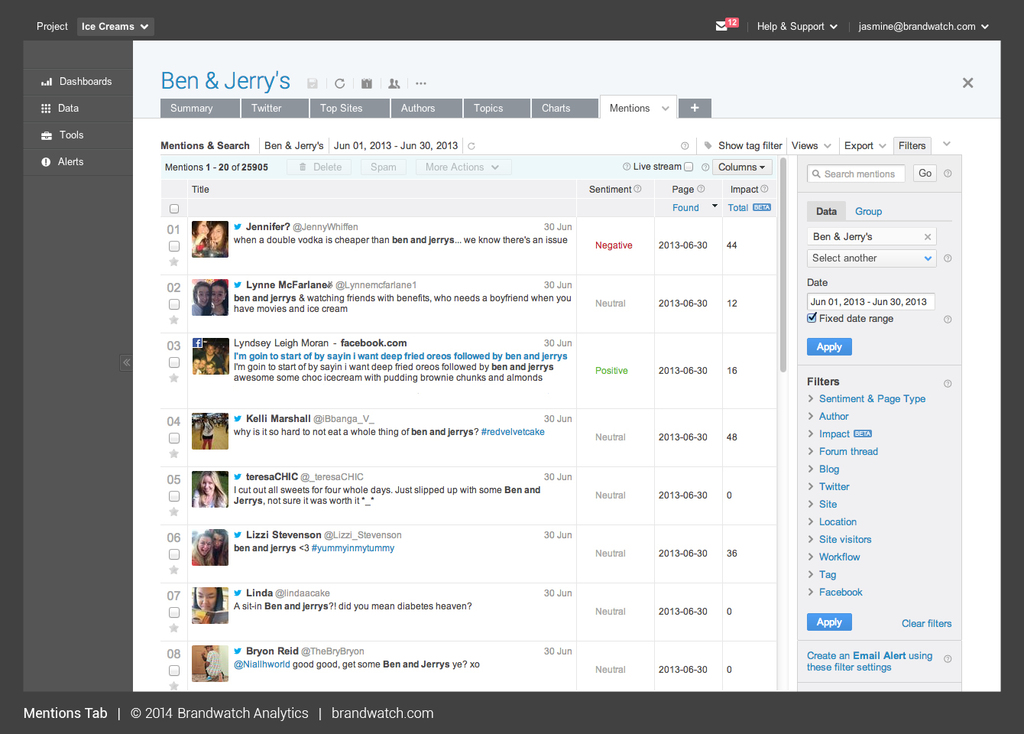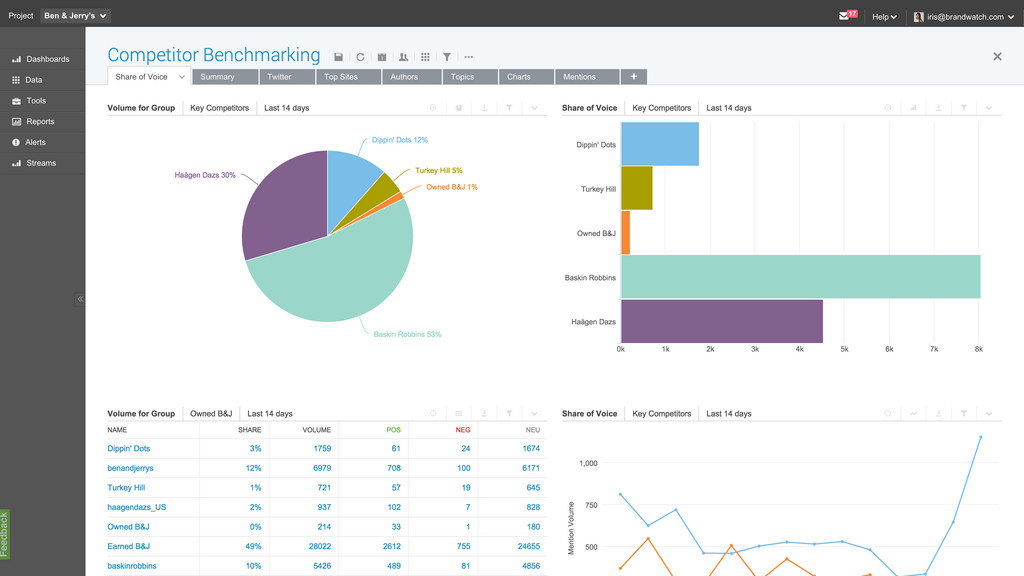20 Social Media Holidays to Celebrate This May
By Yasmin PierreApr 10
Unlock the secrets to staying ahead in the ever-evolving world of social media marketing.
Published October 29th 2014
The importance of understanding your brand perception in the era of digitalism cannot be overstated. People research, evaluate and purchase based on so many more factors and influences than they did a decade ago, and the consequences for brands are immense.
Customers today are increasingly connected, informed and empowered, meaning they develop high expectations and are more demanding than ever before. Their opinions are paramount in determining your brand’s perception.
The truth is, your brand is simply a mental creation to help consumers understand one company/product/service/industry over another. It is the accumulation of shared experiences, the volume and frequency of which people share is constantly rising.
While social media continues to prosper, you risk an increasing loss of control over the definition of your brand. And I’m not just referring to the startups of today. Every brand is vulnerable.
Amazon’s Jeff Bezos would say: “Your brand is what people say about you when you’re not in the room.”
So how do you find out what consumers really say and think about you, your products and services? And how does this compare to your competitors and the wider industry you operate in?
Although many marketers may believe they have a very strong understanding of what their brand stands for, it may not always be accurate.
Perception is reality, so even though it’s tempting to jump right into online communities and share what you have to say, you first must understand the perceptions that people have about your brand.
Listen before you act.
Thanks to the inherent traceability of social media, you can start from scratch and embark upon a bit of research to quickly build a picture of your brand that reflects today’s reality easily through the use of a social listening tool.

Today there is such a wealth of data available at our fingertips, which – if sliced and diced correctly – can yield tremendous insights.
Ask yourself the following questions as often as possible:
Evidence from social listening tools and other research methods can help you uncover the truths about your brand and find the answer to these questions. Once you’ve worked out what the current perception is, and what you’d like it to be, it’s time to act on your findings.
Considering that your data will impact your company’s strategy, you will want to base your findings on the largest data set possible. With an advanced social listening platform, you can filter, segment and categorize your data to find patterns, such as :

Take, for example, a consumer electronics corporation like Best Buy. By segmenting their data by their individual products (TV, mobile, computer, cameras, etc.) and mention type, their research teams can compare the standings among all their products.
The insights gained from the patterns that emerge should inform the strategy direction of your brand; the stronger and the more frequent the patterns, the more global that perception.
Once you’re happy with the results when tracking your brand and perhaps a few of your key competitors, you can really turn some strategic levers.
By performing side-by-side comparisons between your company and your current or potential competitors, your management can gain a deeper understanding of your brand in the context of the industry.
Competitor benchmarking will help them validate the company’s strategy and prepare a branding strategy in the event that the competitor enters the same market.

A huge number of organizations have already initiated social listening into their business. Yet, many rarely use all that wealth of data to actually transform and inform efforts across the organization, meaning there’s a big window of opportunity to gain a competitive advantage. It’s never too late to re-evaluate and change what people think of your brand.
The payoff is massive! According to one study, social media is responsible for the biggest shift in brand perception. In fact, social content exposure results in people being seven times more likely to spend or consume, when compared to PR or TV branding.
However, creating content for social media is not the only way to act on your findings. How you should behave depends on what exactly it is that you have found.
No amount of smart data will solve a customer issue or fix a faulty product by itself. Sometimes it will merely inform you of actions you must take across the organization to march in harmony with your customers.
If you succeed to define a picture of your brand that you believe really reflects what people think, just know that you have something extremely valuable to act upon.
Wanna know more on how you can use social listening to better understand your brand’s perception? Download the full eBook here:
[cta_button title=”Social Listening for the Truth about Your Brand” text=”Know your brand” target=”https://www.brandwatch.com/ebook-understanding-your-brand-via-social-media/”]
Offering up analysis and data on everything from the events of the day to the latest consumer trends. Subscribe to keep your finger on the world’s pulse.
Consumer Research gives you access to deep consumer insights from 100 million online sources and over 1.4 trillion posts.
Existing customer?Log in to access your existing Falcon products and data via the login menu on the top right of the page.New customer?You'll find the former Falcon products under 'Social Media Management' if you go to 'Our Suite' in the navigation.
Brandwatch acquired Paladin in March 2022. It's now called Influence, which is part of Brandwatch's Social Media Management solution.Want to access your Paladin account?Use the login menu at the top right corner.



